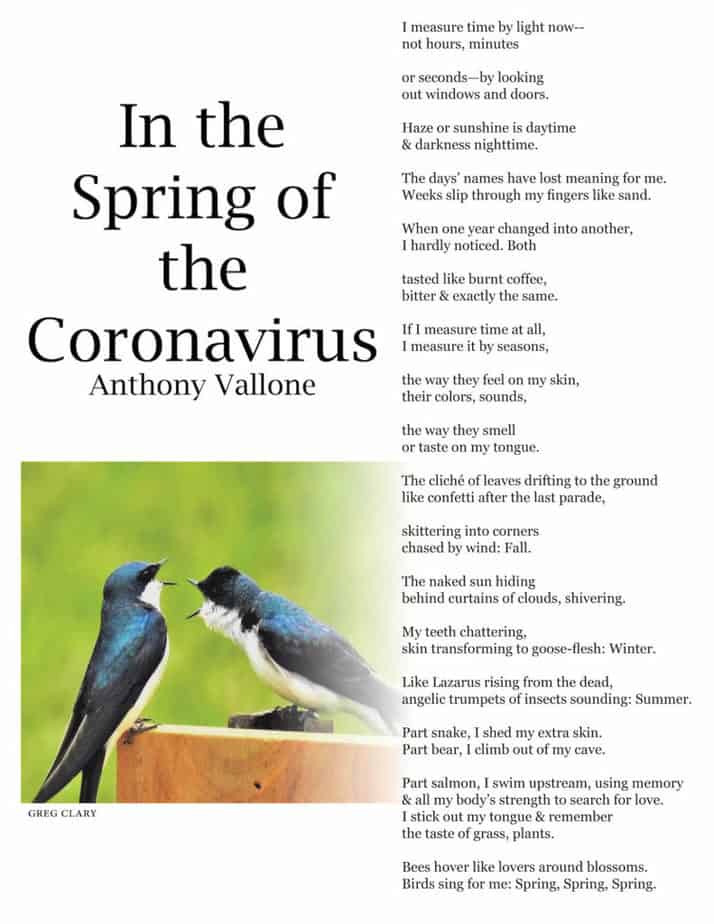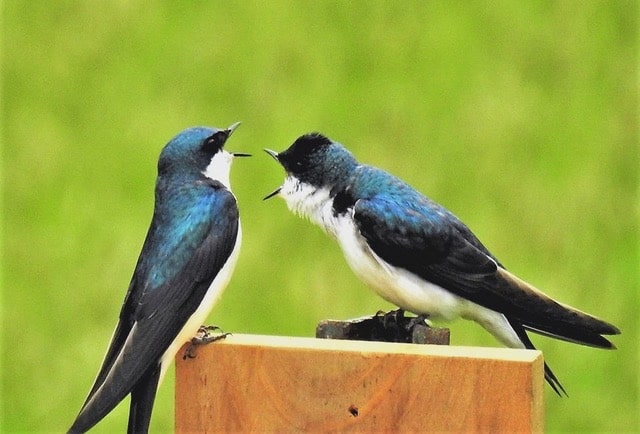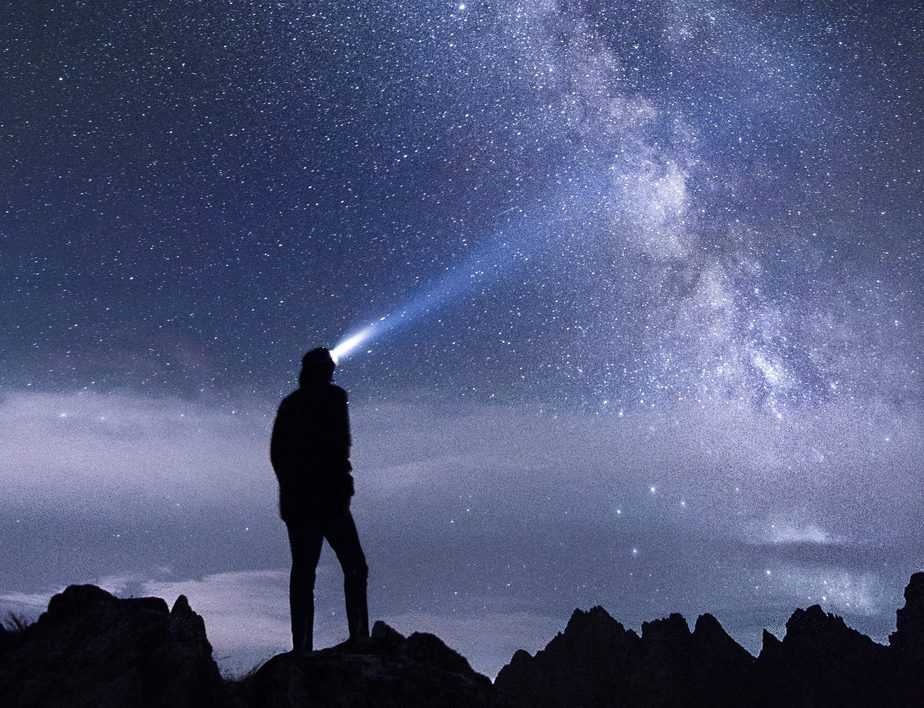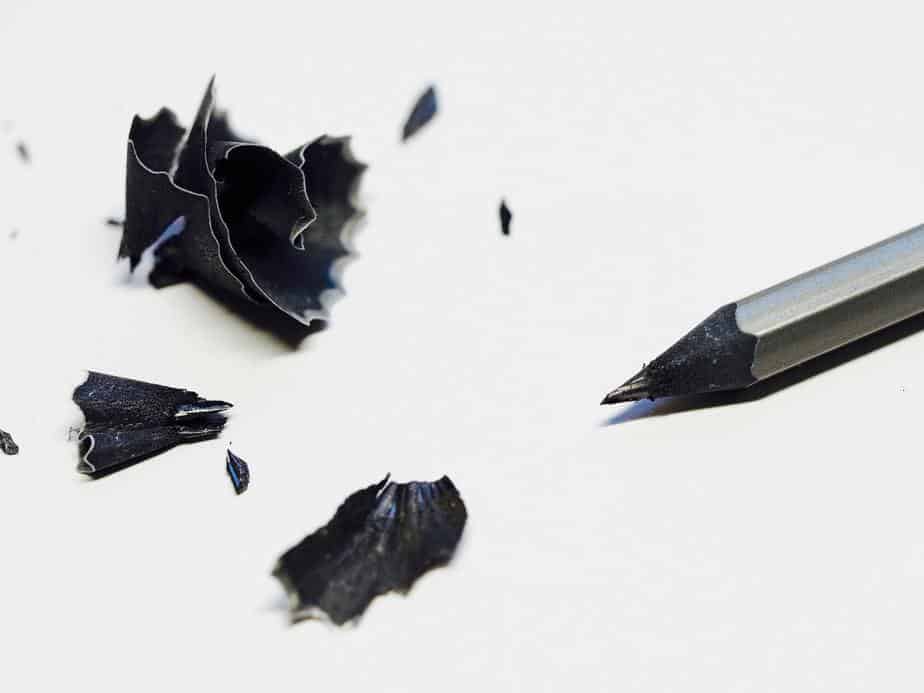Tony Vallone
“In the beginning was the word, and that word—in my case—was “pandemic.”
Like most people during this time, I practiced social distancing. Along with my wife, I stayed sealed up in our home for the majority of my activities: teaching my college classes online, shopping for groceries and household doodads online, attending meetings online, even visiting with friends online.
No matter the world or persona situation, I’m always scribbling notes for poems, but the pandemic helped reignite my interest in turning those scribbles into more-or-less finished poems and sending the poems out to literary journals in hopes those journals would publish them. Maybe it was the fear of illness or death from the virus. Maybe it was the kidney cancer I was also dealing with. Yeats revised his poems on his actual deathbed. I was writing madly on my feared one.
The pandemic also made me come to terms with boredom. Chilling or not, you can only binge watch so many movies or television shows on Netflix.
Due to the nearly total lack of need to do or to be anywhere or to do anything at or by a certain time, I began to not care about the ways we normally measure our lives: hours, days, months. Even a year seemed to slip nearly unnoticed into the next.
Since I’m a stationery (and stationary) nerd, pens and notebooks can be found everywhere my wife allows them in our house: the garage, my office, in and on the table next to the chair I sit in most in our living room. That’s where I do my writing these days. I find comfort helps spur creativity. Suffering might help make good art, but it’s highly overrated.
It was in that chair “In the Spring of Coronavirus” was born.
Actually, born suggests it came out fully formed like a healthy baby. Nothing could be further from the truth. I am not as powerful and magical as any mother.
One day my wife asked me what time it was. Instead of looking at the clock on the wall in front of me or looking at any one of several electronic devices around me—phone, tablet, laptop—I answered “dark.”
I felt delighted.
From there, I started playing around with other ways I measured the passing of time without watches, clocks, or calendars: light, dark, birds, insects. Poetry is play after all. Ask most kids below a certain age and they’ll tell you poetry is fun. Above that age, and more often than not, they’ll hold their noses and make faces like they’re sucking lemons. Most people lose the sense of fun with writing poetry as they grow up. Like Billy Collins, I blame that on all the time we spend beating the meaning out of poems we’re forced to interrogate like prisoners of war in classes. Maybe it’s just capitalism, though. The need to make money, in many people, elbows out the need to make poetry.
From that initial scribble, I wrote multiple drafts in my notebook and later on my laptop, at first adding to the poem. Unlike with dieting, it’s easier to trim a poem’s fat. Write big; publish small: James Dickey, I think, said something like that. Then I revised from larger units to smaller: trying out different stanza lengths and shapes and line breaks, better sentence syntax structures and diction, more interesting images. Finally, I subtracted even the last unnecessary “the” and “a” as Yusef Komunyakaa, my thesis advisor did with my MFA thesis.
Now, let me mix some metaphors.
Ideas for poetry are everywhere. They’re in the air around us like radio or pre-cable television waves. Any of them could be a poem. It’s up to us as poets to tune them in, sharpen the sound or picture, so it’s not just static or the “bug fights” captured by rabbit ear television antennas askew. I’m old enough to remember our family’s first television, It was black-and-white and got four channels (not all that well). Now, our television is high definition and in fully palpitated color. My poems should be like that, too. In the John Cheever short story, “The Enormous Radio,” the living-room radio the couple in the story buys to sit around and listen to picks up not music or news but the sounds of the world. It’s functioning like a poet should.
Or maybe ideas for poetry are like lightning bugs flying out of the grass at our feet in the summertime. There’s too many to capture them all. But we try, the best we can—with jars for the lightning bugs and pens and paper or laptops for the poems—to capture and hold them to admire and then let escape back into the world, maybe even more alive for us having captured them. Or so we hope.
Then, to radically shift my metaphor one last time, poets need to be sculptors, looking at the block of marble in front of us, and with smaller and smaller tools—from dynamite and jackhammers to chisels and dental pics—find the figure in all its detail within.
I try to take advantage of every poetry opportunity that comes my way. Just the other day, I saw a call for poems that involved David Bowie and remembered that one of the first dates my future wife and I went on in 1983 was to see Merry Christmas, Mr. Lawrence, starring David Bowie. I took a chance, researched the movie a bit to refresh my memory, wrote a poem, sent it in. A day after I sent it, the editor sent me back an acceptance email, telling me the poem is exactly what she was looking for.
Writing poems is like keeping pet birds. Like colorful parrots, the poems can live in their cages, never venturing past the bars, talking only to you for their whole lives. They might dream of being racing pigeons, but even racing pigeons come home to roost after they’ve tested the sky. Publishing is more like seeing a wild bird you’ve nursed back to health free. It flies away, and you have to live with whatever happens. It may be eaten by a hawk. It may be rejected by the flock for the scent your hands have left It may live a long and happy life admired by whoever sees it.
According to the Bible, the Christian God created all the heavens and Earth in six days. No deity myself, it usually takes me much longer to create the world of a single poem.
Vallone’s poem was featured in the Spring 2021 Edition of The Watershed Journal literary magazine, paired with an image from photographer Greg Clary.





